The Best Surface for Acrylic Painting | These Tips Will Make Your Artwork Last Longer
How choosing the right surface can make your acrylic artwork last longer.
Choosing the right surface to use acrylic paint on can determine:
- How long your artwork lasts
- The professional value of your artwork
- Whether you need to prime or not
The wrong surface can result in your paint falling off over time, or bumps and lumps in your artwork. A good surface doesn’t have to be expensive either!

Poor surface choices can lead to unpredictable results, ruined artworks and frustration! Choose well and you will thank yourself later.
In this article we will teach you how to choose the right surface for acrylic painting. We will also teach you how to source different surfaces and some common mistakes artists make with their surface choices!
[TS_Poll id=”1″]


Table of contents for surfaces for acrylic pouring:
- Recommended surfaces
- Finding the right surface
- Where to find the best surfaces
- Experiment with different surfaces
- The worst surfaces for acrylic painting
- Best surface for acrylic pouring
- When to switch surfaces
- Brands
- Try new things
- Do your research
1. Recommended surfaces for acrylic paint
The great thing about acrylic paint, is that it can be painted onto virtually anything.
Acrylic paint dries fast, it is also one of the most versatile and durable paint types.
The synthetic polymer is the key ingredient in acrylic paint which is essentially, glue! This makes it strong enough to hold onto glass, wood, canvas, paper, walls, plastic, etc. (As long as you start with a primer paint that is).
Lets discuss below, some of the most recommended surfaces to paint on. This is if you want your artwork to last. But please remember that there are no rules when it comes to art!

1) Canvas Paper
Paper is the cheapest and easiest surface to paint on.
It’s easy to store, transport and display. It can also result in some issues if you choose the wrong paper.
Paper that is not designed for water based painting will warp, tear and fall to pieces either immediately or over a few years.
Paper that is suitable for acrylic paint is fairly thick and textured. Paper thickness is described in “GSM” or “grams per square meter”. The higher the GSM, the thicker the paper is going to be.
The paper should be at least 250gsm, or more if you want to do multiple layers and use thick paint.
Warning: For very thick paint, paint pouring methods or many layers of paint, paper is not recommended.
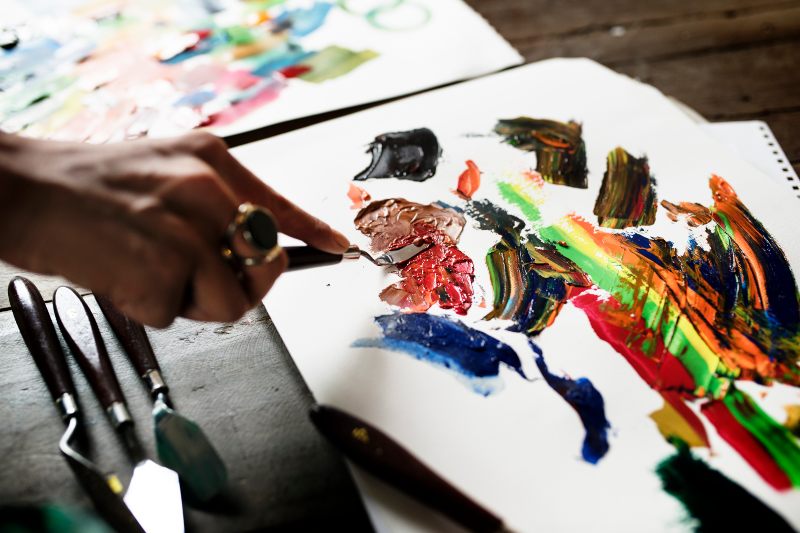
It’s worth spending a bit of time at your local art store and have a chat to the attendants or go online to browse somewhere like Eckersleys.
Start with buying paper that is designed for acrylic paint. Watercolour paper is also suitable.
For a newbie, Dick Blick in USA has some great deals on paper for painting.
And in Australia Reeves is the cheapest commonly available decent brand. It comes in various sizes, quantities and thicknesses. It works out to approximately $2.50 for a per A3 sheet of thick paper (in a pack of 10), which is great value.
2) Stretched Canvas
Sometimes we may want to use thick paint, pour paint or work on a piece for more than a couple of days. Even good quality paper will struggle to support this. This is when it would be good to switch to canvas.
“Canvas” can refer to any fabric that you paint on, even if it’s cotton, linen or actual canvas. Like with paper, you get what you pay for.
Buy a cheap canvas and it can warp over time and the paint will be difficult to apply paint in the beginning.
Also the colours can be absorbed into the canvas, requiring multiple layers simply to cover the canvas. For thick paintings we recommend using canvas which has been stretched over a frame.

The three signs of a good canvas:
- Firstly the wood that supports the canvas will be thick and strong, so the canvas won’t warp easily.
- Secondly the material will be a good surface to paint on, like cotton or linen. These have some grip but not too much.
- Lastly the canvas will be properly “primed”. This means that the material is painted with an acrylic substance which your paint will sit on. If the surface was not properly primed most of your paint can simply seep into the fabric or peel off the canvas.
3) Canvas brands
Brands like what you will find at Michael’s in USA, or anything you can get at a dollar shop are great for experimenting.
Canvas board is also great for experimenting but can warp when used for fluid art.
Blick Premiere Cotton Canvas, Arteza, Masterpiece and Windsor and Newton are reviewed as a good brand for canvases and can cost between $30 – $100.
If you’re working on an artwork for a few weeks this is a minor cost for something that will give you a better experience.
If you can afford to go higher, speak to local framers and suppliers like Pigment Lab, who make custom canvases and import great material from Italy.
Their canvases might be $50 – $200 but are far superior to bulk created canvas.
Experiment with different fabrics. Linen canvases are great if your work is fairly smooth and detailed, like Margeret Ollet. Cotton would also be a good option. If you like to use large brushstrokes like An Doh then consider an unprimed rougher material.

4) Wood
A thick wood panel offers the best support for acrylic painting.
It is rigid, which means that paint won’t easily crack.
With canvas and paper, the paint can become brittle over time and if the surface bends, or cuts cut it could result cracks or holes in the paint.
If you are planning on using very thick buttery strokes, or pouring art and if you want the painting to last for many years, consider painting on wood.
This is the most expensive popular surface, and the heaviest by far!
It’s at least worth trying it out.
Most art stores will have small wooden panels from as little at $12.
As you get larger though, the thickness of the wood needs to increase, so the prices get exponentially higher.

3. Where to find the best surfaces for acrylic painting
There are a number of outlets which sell high quality surfaces for painting on, there’s also a number of budget options.
4.How much money to spend on a surface
There are a number of brands which are the most popular for acrylic painting surfaces. They can be found in store or online.
A lot of people think you need to buy the most expensive option to get the best results, however this is not always true. A budget canvas can deliver excellent results when used properly.
Also, sometimes when we buy expensive surfaces there’s that added pressure to make something that “looks good” on it.

This leads to less experimentation, and more restraint. So instead, go cheap with purpose (but not too cheap) and go wild with experimentation! 🙂
It is possible to make a “great artwork” on any surface. In fact many contemporary artists like Jean-Michel Basquiat painted onto old pieces off junk wood!
You just need to take the right steps to prime your artwork, and seal it once finished!
4. Experiment with surfaces for acrylic paint
The beauty of acrylic paint is that it is versatile when it comes to paint surfaces.
If you are paint pouring you can do this on many different surfaces you are not confined to canvas only!
Consider trying out painting on new or old objects you have such as ceramic bowls (pre-glazing), old tables, old chopping boards are all fun surfaces to paint on. Paint brushes themselves, frames, jar lids, mirrors, little boxes, place mats, coasters and even old musical instruments. The list goes on!
The most important thing is to do your research when it comes to acrylic paint surfaces.
Ask the workers at art shops and hardware stores because they can recommend the best primers and sealants for your artwork. Depending on the surface that you are planning on using.
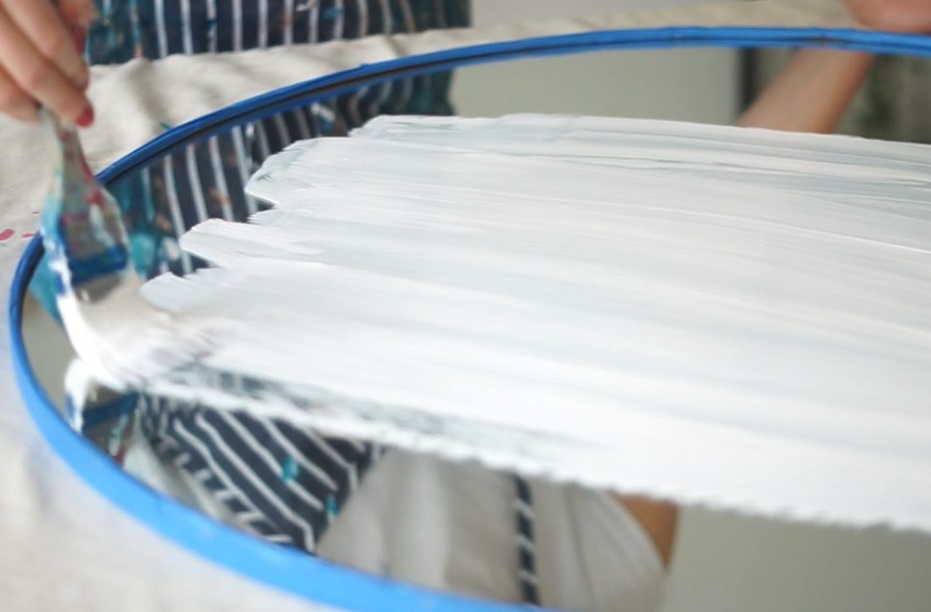
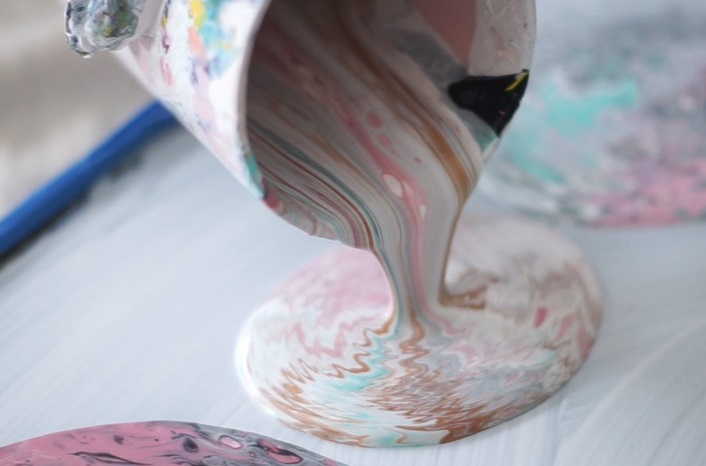

5. The worst surfaces for acrylic paint
Because acrylic paint is water based, using thin paper is a bad option it can lead to tearing and warping.
It is almost impossible to paint with acrylic paint on glazed ceramic, again because it is so smooth the acrylic paint will peel off in many cases. Painting prior to glazing will work though!
Metal and glass surfaces are also too smooth for acrylic paint. Although you can roughen up the surface to help the paint stick to it.
Sometimes you will paint on a smooth surface and the acrylic paint will just peel off it, in this case it is important to prime the surface first. This will help the painting to last longer.

FAQ Questions:
- What kind of paper do you use for acrylic paint?
Paper should be fairly thick (at least 250 gsm) and slightly textured. Populars brands include Reeves, Arches and Fabriano
- What is the best brand of acrylic paint?
Da Vinci and Golden are fantastic Brands. Windsor and Newton Professional and Mattise are also good. Avoid any products labelled as “student quality” if you are seeking high pigmentation. But if you are pouring paint then student quality is a good, inexpensive option.
- What does acrylic paint not stick to?
Acrylic paint sticks to most surfaces but will have a harder time sticking to smoother surfaces like glass and metal. You can scuff (roughen) these surfaces if you wanted to paint on them though.
- What to paint on when you don’t have a canvas?
Paper, wood, old furniture, glass, mirror, blackboard, even walls are great surfaces. Be creative and have fun with ideas!
- Is acrylic paint waterproof?
Yes. Once Acrylic paint dries it forms a solid plastic-like layer which is waterproof. Bear in mind that some mediums that you choose to mix with acrylic paint may make it less waterproof. It should still resist the occasional splash of water, but leaving an acrylic painting underwater or out in the rain for an extended period of time is obviously not advised!
- What are fun things to paint on?
In terms of surfaces to paint on, ceramic bowls (pre-glazing), old tables, and old chopping boards could all be enjoyable surfaces to paint on. Paint brushes themselves, frames, jar lids, mirrors, little boxes, place mats, coasters and old guitars!



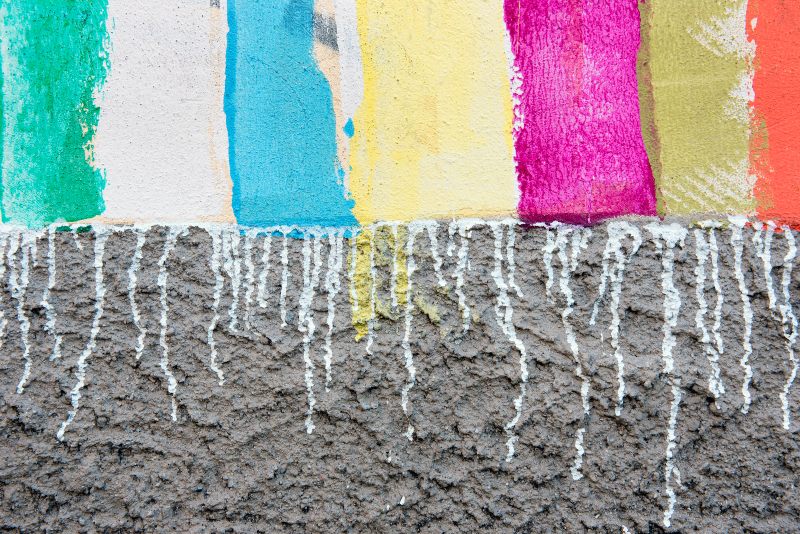


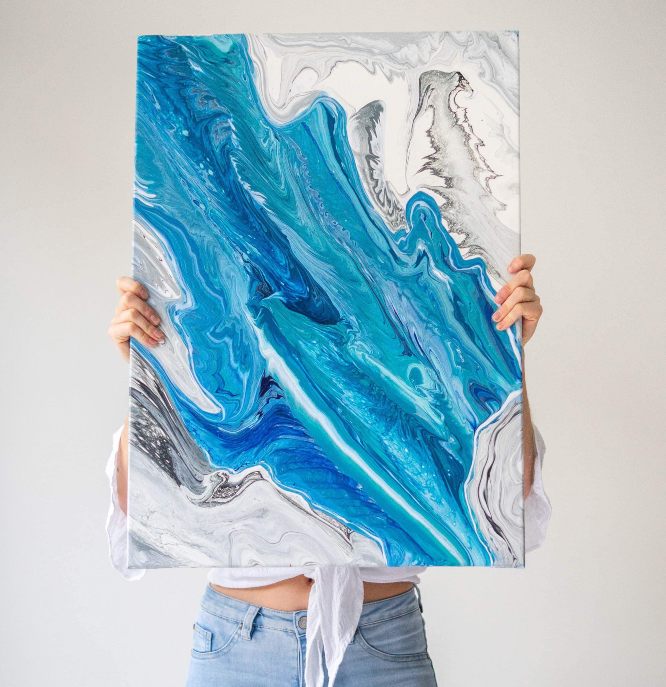

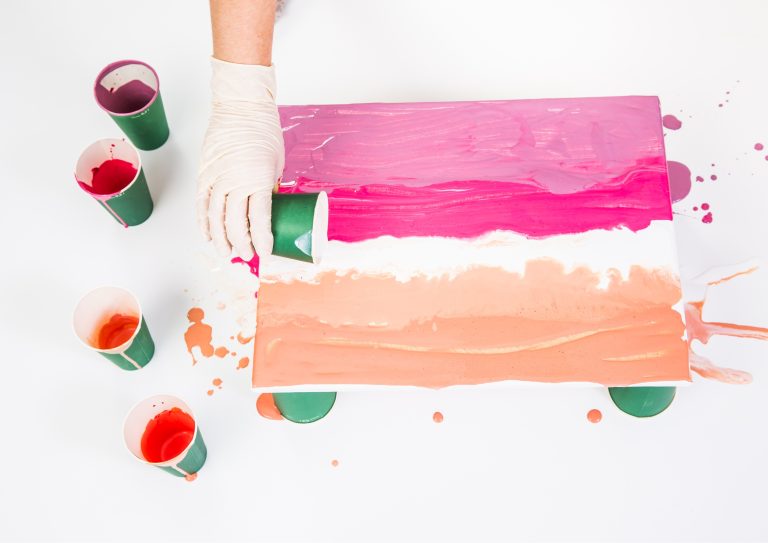
You cover the topic so well!!! Thank you for your effort! I did wonder about toxicity with acrylic paint. Just putting on and off the tiny, (to my mitts) caps often gets paint on my fingers, then ha ha it winds up in more than one place!
Again thank you for all of the info you offer to painters!
max myers